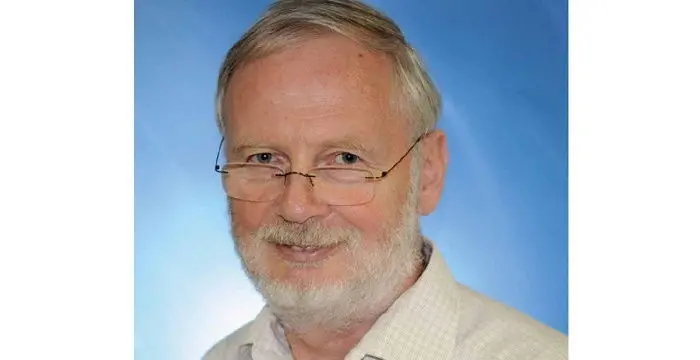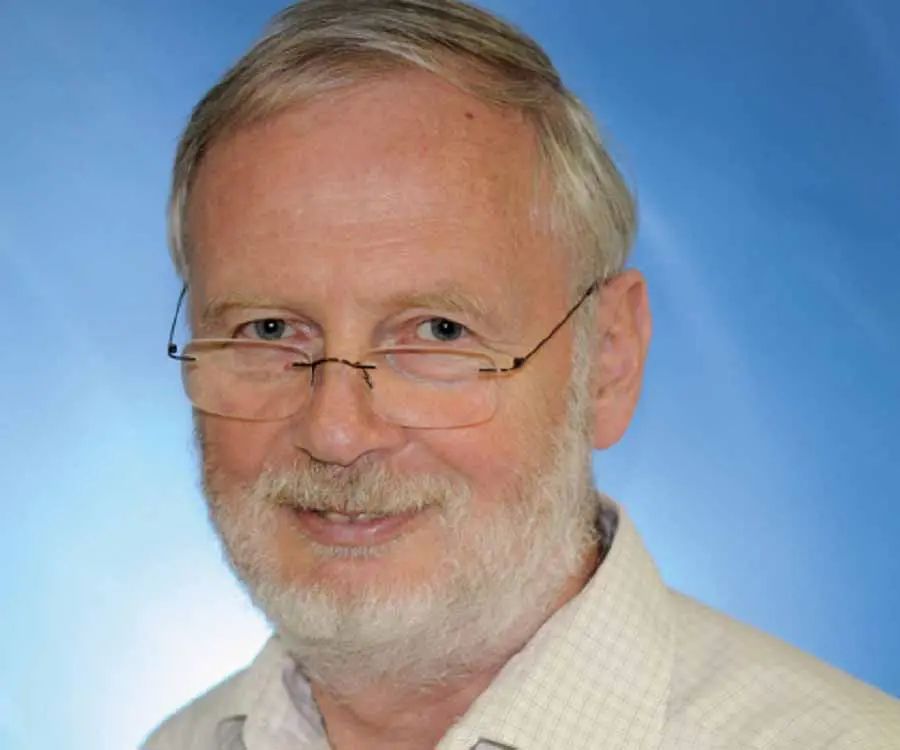
Hartmut Michel - Biochemists, Birthday and Facts
Hartmut Michel's Personal Details
Hartmut Michel is a German biochemist who won with Nobel Prize in Chemistry in 1988
| Information | Detail |
|---|---|
| Birthday | July 18, 1948 |
| Nationality | German |
| Famous | Scientists, Chemists, Biochemists |
| Spouses | Elena Olkhova |
| Childrens | Andrea, Robert Joachim |
| Birth Place | Ludwigsburg, Germany |
| Gender | Male |
| Father | Karl Michel |
| Mother | Frida Michel |
| Sun Sign | Cancer |
| Born in | Ludwigsburg, Germany |
| Famous as | Biochemist |
// Famous Scientists
Juliane Koepcke
Juliane Koepcke is a German-Peruvian biologist, who was the lone survivor among the 92 passengers and crew of the ill-fated LANSA Flight 508 that crashed in the Peruvian rainforest on 24 December 1971. Know more about her life in this biography.
Henry Cavendish
Henry Cavendish was a theoretical chemist and physicist, renowned for discovery of hydrogen and calculation of the mass of earth. To know more about his childhood, profile, timeline and career read on
Konstantin Tsiolkovsky
Konstantin Tsiolkovsky was a Russian rocket scientist and a pioneer of astronautics. This biography provides detailed information about his childhood, family, personal life, career, achievements, etc.
Hartmut Michel's photo
Who is Hartmut Michel?
Hartmut Michel is a German biochemist who was conferred with the Nobel Prize in Chemistry in 1988 for finding success with the crystallization of membrane proteins and elucidation of the three-dimensional structure of the photosynthetic reaction centre from the purple bacterium Rhodopseudomonas viridis. He shared the prize with Robert Huber and Johann Deisenhofer. Photosynthesis is the most important chemical reaction in the world. Research conducted by Hartmut Michel, Robert Huber and Johann Deisenhofer helped in achieving a major breakthrough that helped in the understanding of the light reaction in photosynthesis. Apart from his work in the photosynthetic reaction centre, Michel was the first to observe the three-dimensional crystals in the membrane protein bacteriorhodopsin. In 1981, he became the first scientist to crystallise a membrane complex, the photosynthetic reaction system, and thereby make it accessible to X-ray structure analysis. His pioneering work has found application in various fields including medicine. Currently, he serves as the Director of the Department of Molecular Membrane Biology at the Max Planck Institute of Biophysics in Frankfurt am Main and as an Adjunct Professor at Goethe University in Frankfurt am Main.
// Famous Chemists
Henry Cavendish
Henry Cavendish was a theoretical chemist and physicist, renowned for discovery of hydrogen and calculation of the mass of earth. To know more about his childhood, profile, timeline and career read on
Walter Kohn
Nobel Laureate Walter Kohn was an Austrian-born American theoretical chemist and physicist. Check out this biography to know about his childhood, life, achievements, works & timeline.
Jabir Ibn Hayyan
Jabir Ibn Hayyan was a medieval era polymath. Check out this biography to know about his life, works and achievements.
Childhood & Early Life
Hartmut Michel was born on July 18, 1948 in Ludwigsburg, Federal Republic of Germany to Karl and Frieda Michel. He was the eldest son of the couple. His father worked as a joiner in a factory while his mother functioned as a dressmaker.
Academically brilliant, young Michel performed well at school. It was due to the influence of his mother that Michel enrolled at a high school. He spent most of his time reading books on various subjects including archaeology, ethnology, geography, zoology and so on. His favourite subjects were history, biology, chemistry and physics.
After completing obligatory services in the military, Michel applied to study biochemistry at the University of Tubingen. The course allowed him to study both his favourite subjects deeply. He was marvelled by the intricacies of biology and the reactions of chemistry. Furthermore, he took up the opportunity to work at various biochemistry labs for a year instead of taking up lab courses in Tubingen.
Michel completed the practical section of his diploma at Dieter Oesterhelt’s laboratory at the Friedrich Miescher-Laboratorium of the Max-Planck-Gesellschaft, working on ATPase activity of halobacteria.
After receiving his diploma in 1974, Michel worked at the Dieter Oesterhelt’s laboratory. The following year, the laboratory shifted to Wurzburg.
In 1977, he obtained his PhD. His thesis was on correlating the intracellular levels of adenosine di- and triphosphate with the electrochemical proton gradient across the halobacterial cell membrane.
Career
After completing his PhD, Michel continued his research at the Oesterhelt's laboratory. Initially, he tried to fuse delipidated bacteriorhodopsin with bacterial vesicles in order to achieve light-driven amino acid uptake. He stored the delipidated bacteriorhodopsin in freezer which led to generation of solid, glass-like aggregates. The residue convinced him of the possibility of crystalize membrane proteins.
It was in 1979 that Michel observed the first real three-dimensional crystals of bacteriorhodopsin after much effort. The success led him to cancel his plans of taking up post-doctoral studies on sexual differentiation in mammals at Susumu Ohno, Duarte, California.
Together with Dieter Oesterhelt, Michel moved to Max-Planck-Institut für Biochemie at Martinsried near Munich, where he took up the position of a department head and director. The move was a well thought one as Michel hoped to collaborate with Robert Huber and his colleagues, who had established a very productive department for X-ray crystallographic protein structure analysis at the Max-Planck-Institut.
In 1980, for four months, Michel worked at the MRC in Cambridge, England, together with Richard Henderson, performing X-ray experiments. The period was crucial as he worked on improving the crystallization method.
After several failed attempts, Michel finally found success in 1981 when he obtained the first crystals of the photosynthetic reaction centre from the purple bacterium Rhodopseudomonas viridis. In September same year, the first reaction centre crystal was X-rayed which turned out to be of excellent quality.
In 1982, Michel collaborated with Robert Huber and Johann Hans Deisenhofer. They used X-ray crystallography to determine the exact arrangement of the more than 10,000 atoms that make up the protein complex. Their research increased the general understanding of the mechanisms of photosynthesis, revealed similarities between the photosynthetic processes of plants and bacteria and established a methodology for crystallising membrane proteins.
With the help of Michel and Huber, Deisenhofer determined the three-dimensional structure of a protein complex found in certain photosynthetic bacteria. This membrane protein complex, called a photosynthetic reaction center, was known to play a crucial role in initiating a simple type of photosynthesis.
Following his success, Michel received several offers. He, however, accepted the position of a Director at the Department of Molecular Membrane Biology at the Max Planck Institute of Biophysics in Frankfurt am Main where he has been working since 1987. Furthermore, since 1989, he is serving as the adjunct professor at Goethe University in Frankfurt am Main.
Major Works
Hartmut Michel collaborated with Robert Huber and Johann Deisenhofer to work on one of the most fundamental process of life called photosynthesis. The trio determined the three-dimensional structure of a photosynthetic reaction centre. It IS known to play a crucial role in initiating a simple type of photosynthesis.
Awards & Achievements
In 1986, Michel was bestowed with the Leibniz Prize of the Deutsche Forschungsgemeinschaft, the highest honor awarded in German research.
In 1988, he received the prestigious Nobel Prize in Chemistry along with Johann Deisenhofer and Robert Huber for his work in determining the three dimensional structure of a photosynthetic reaction centre. Same year, he was conferred with the Otto-Bayer-Prize alongside with Johann Deisenhofer.
In 2008, Michel received the Keilin Medal from the British Biochemical Society.
He became a foreign member of the Royal Netherlands Academy of Arts and Sciences in 1995.
In 2005, he was elected a Foreign Member of the Royal Society (ForMemRS).
Personal Life & Legacy
Michel tied the nuptial knot with Elena Olkhova. The coupe was blessed with a daughter, Andrea, in 1981 and a son, Robert Joachim, in 1984.
// Famous Biochemists
Robert Huber
Robert Huber is a German biochemist and Nobel Laureate. Check out this biography to know about his childhood, life, achievements, works & timeline.
Charles Best
Charles Best was a great scientist and a renowned physiologist who is remembered for being the co-discoverer of insulin. Read this biography to learn about his profile, childhood, life and timeline.
Isaac Asimov
Isaac Asimov was an American professor of biochemistry and a renowned author of science fiction and popular science books. Read this biography to know more about his life.
Hartmut Michel's awards
| Year | Name | Award |
|---|---|---|
Other | ||
| 0 | Max Delbruck Prize (1986) | |
| 0 | Gottfried Wilhelm Leibniz Prize (1986) | |
| 0 | Nobel Prize in Chemistry (1988) | |
| 0 | ForMemRS (2005) | |
Hartmut Michel biography timelines
- // 18th Jul 1948Hartmut Michel was born on July 18, 1948 in Ludwigsburg, Federal Republic of Germany to Karl and Frieda Michel. He was the eldest son of the couple. His father worked as a joiner in a factory while his mother functioned as a dressmaker.
- // 1974After receiving his diploma in 1974, Michel worked at the Dieter Oesterhelt’s laboratory. The following year, the laboratory shifted to Wurzburg.
- // 1977In 1977, he obtained his PhD. His thesis was on correlating the intracellular levels of adenosine di- and triphosphate with the electrochemical proton gradient across the halobacterial cell membrane.
- // 1979It was in 1979 that Michel observed the first real three-dimensional crystals of bacteriorhodopsin after much effort. The success led him to cancel his plans of taking up post-doctoral studies on sexual differentiation in mammals at Susumu Ohno, Duarte, California.
- // 1980In 1980, for four months, Michel worked at the MRC in Cambridge, England, together with Richard Henderson, performing X-ray experiments. The period was crucial as he worked on improving the crystallization method.
- // 1981After several failed attempts, Michel finally found success in 1981 when he obtained the first crystals of the photosynthetic reaction centre from the purple bacterium Rhodopseudomonas viridis. In September same year, the first reaction centre crystal was X-rayed which turned out to be of excellent quality.
- // 1981 To 1984Michel tied the nuptial knot with Elena Olkhova. The coupe was blessed with a daughter, Andrea, in 1981 and a son, Robert Joachim, in 1984.
- // 1982In 1982, Michel collaborated with Robert Huber and Johann Hans Deisenhofer. They used X-ray crystallography to determine the exact arrangement of the more than 10,000 atoms that make up the protein complex. Their research increased the general understanding of the mechanisms of photosynthesis, revealed similarities between the photosynthetic processes of plants and bacteria and established a methodology for crystallising membrane proteins.
- // 1986In 1986, Michel was bestowed with the Leibniz Prize of the Deutsche Forschungsgemeinschaft, the highest honor awarded in German research.
- // 1987 To 1989Following his success, Michel received several offers. He, however, accepted the position of a Director at the Department of Molecular Membrane Biology at the Max Planck Institute of Biophysics in Frankfurt am Main where he has been working since 1987. Furthermore, since 1989, he is serving as the adjunct professor at Goethe University in Frankfurt am Main.
- // 1988In 1988, he received the prestigious Nobel Prize in Chemistry along with Johann Deisenhofer and Robert Huber for his work in determining the three dimensional structure of a photosynthetic reaction centre. Same year, he was conferred with the Otto-Bayer-Prize alongside with Johann Deisenhofer.
- // 1995He became a foreign member of the Royal Netherlands Academy of Arts and Sciences in 1995.
- // 2005In 2005, he was elected a Foreign Member of the Royal Society (ForMemRS).
- // 2008In 2008, Michel received the Keilin Medal from the British Biochemical Society.
// Famous Cancer Celebrities peoples
Jacob Elordi
Jacob Elordi is an Australian actor. Let’s take a look at his childhood, family, personal life, career, etc.
Riele Downs
Riele Downs is a Canadian-American actress & Musical.ly star. Let’s take a look at her family and personal life including age, birthday, net worth, boyfriends and fun facts.
Yammy Xox
Check out all that you wanted to know about Yammy Xox, the famous British YouTube Personality; her birthday, her family and personal life, her boyfriends, fun trivia facts and more.
Kaylee Quinn
Kaylee Quinn is an American dancer, model, and actress. Let’s have a look at her family and personal life including age, date of birth, net worth, relationships, and fun facts.
Sophia Montero
Sophia Montero is an American singer and YouTuber. Let’s have a look at her family and personal life including age, date of birth, net worth, relationships, and fun facts.
Domo Wilson
Check out all that you wanted to know about Domo Wilson, the famous American Vlogger & YouTube Personality; her birthday, her family and personal life, fun trivia facts and more.
Hartmut Michel's FAQ
What is Hartmut Michel birthday?
Hartmut Michel was born at 1948-07-18
Where is Hartmut Michel's birth place?
Hartmut Michel was born in Ludwigsburg, Germany
What is Hartmut Michel nationalities?
Hartmut Michel's nationalities is German
Who is Hartmut Michel spouses?
Hartmut Michel's spouses is Elena Olkhova
Who is Hartmut Michel childrens?
Hartmut Michel's childrens is Andrea, Robert Joachim
Who is Hartmut Michel's father?
Hartmut Michel's father is Karl Michel
Who is Hartmut Michel's mother?
Hartmut Michel's mother is Frida Michel
What is Hartmut Michel's sun sign?
Hartmut Michel is Cancer
How famous is Hartmut Michel?
Hartmut Michel is famouse as Biochemist














